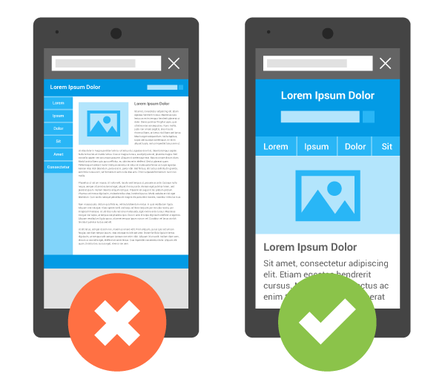|
If you follow writings on how to improve marketing strategies for your online business, you’ve probably seen the word “optimize” a thousand times. The application is diverse, but typically it refers to making your content accessible and readable. Whether or not you’re prepared, the internet commerce trend is swinging toward mobile. Tablets, cell phones, and even watches are now the go-to media for shoppers hoping to pick up a bargain or hunt down something they’ve dreamed of owning. In fact, more than half of all web commerce takes place on mobile devices. And that ratio will skyrocket in the coming decade. That means the equipment you (or your web designer) use to create an attractive, user-friendly site on which to peddle your wares may not be even remotely close to what your customers use to purchase them. Code-driven page layout has become unwieldy and complex over the last decade, and even though its goal is to improve readability, it can also wreak havoc if not used properly. The Eyes Have It
In his blog post, digital marketing expert Neil Patel lays out a convincing case for cleaning up content, and pads it with rather impressive scientific data. As it turns out, optical scans of device content follow precise patterns, and designing a layout counter to its findings can be an instant turn-off. One way to improve ease-of-use strategies for mobile devices is to concentrate on scrolling and forgo pagination. If pagination is more compatible with your content, by all means use it. But try to ensure that mobile readers can swipe through pages quickly rather than searching for and launching a tiny link to advance to the next page. Brightedge.com also offers highly useful tips on making your site user-friendly on a phone or tablet. Start with these:
Here’s a factoid to keep in mind: Instagram, a visual-based app growing in connection with ecommerce, is available only on phones and not tablets or full-sized computers. Given the bonus of free advertising there, wouldn’t you want interested parties to click through to your site on the device they’re using? Once you’ve optimized for the spectrum of electronic devices, you’ll have your bases covered and likely realize increased interest, if not immediately see greater revenues. It’s a move forward toward a successful ecommerce venture.
0 Comments
Leave a Reply. |
Archives
October 2021
Categories
All
|




